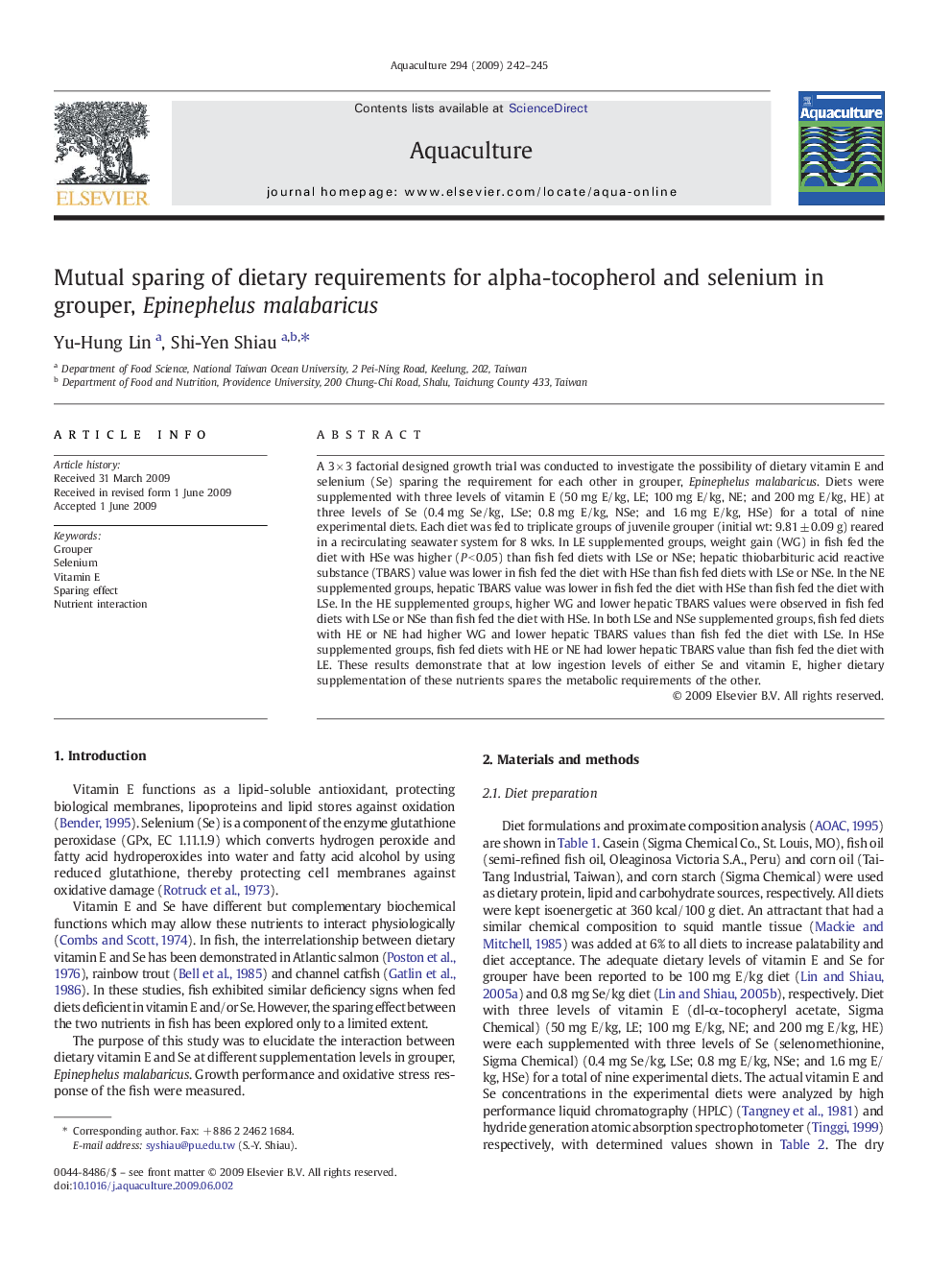| Article ID | Journal | Published Year | Pages | File Type |
|---|---|---|---|---|
| 2423940 | Aquaculture | 2009 | 4 Pages |
A 3 × 3 factorial designed growth trial was conducted to investigate the possibility of dietary vitamin E and selenium (Se) sparing the requirement for each other in grouper, Epinephelus malabaricus. Diets were supplemented with three levels of vitamin E (50 mg E/kg, LE; 100 mg E/kg, NE; and 200 mg E/kg, HE) at three levels of Se (0.4 mg Se/kg, LSe; 0.8 mg E/kg, NSe; and 1.6 mg E/kg, HSe) for a total of nine experimental diets. Each diet was fed to triplicate groups of juvenile grouper (initial wt: 9.81 ± 0.09 g) reared in a recirculating seawater system for 8 wks. In LE supplemented groups, weight gain (WG) in fish fed the diet with HSe was higher (P < 0.05) than fish fed diets with LSe or NSe; hepatic thiobarbituric acid reactive substance (TBARS) value was lower in fish fed the diet with HSe than fish fed diets with LSe or NSe. In the NE supplemented groups, hepatic TBARS value was lower in fish fed the diet with HSe than fish fed the diet with LSe. In the HE supplemented groups, higher WG and lower hepatic TBARS values were observed in fish fed diets with LSe or NSe than fish fed the diet with HSe. In both LSe and NSe supplemented groups, fish fed diets with HE or NE had higher WG and lower hepatic TBARS values than fish fed the diet with LSe. In HSe supplemented groups, fish fed diets with HE or NE had lower hepatic TBARS value than fish fed the diet with LE. These results demonstrate that at low ingestion levels of either Se and vitamin E, higher dietary supplementation of these nutrients spares the metabolic requirements of the other.
